Description
What is WLAN Antenna 2.4GHz Omni Directional Antenna Wifi?
The WLAN Antenna 2.4GHz Omni Directional Antenna Wifi antenna CTRF-ANTENNA-FPC-2450-4212-IPEX antenna item is an FPC antenna with a frequency range of 2400 – 2483MHz wifi antenna manufactured by C&T RF Antenna Inc.
The WLAN Antenna 2.4GHz Omni Directional Antenna Wifi antenna is very good for 2.4GHz wireless network communication transmission and reception.
For the same size 42x12mm embedded antenna style, we do have the same size with Wi-Fi FPC Embedded Antenna type single-band wifi 2.4GHz antenna, 802.11 Antenne Wifi 2.4 GHz Embedded PCB Antenna type single-band wifi 2.4GHz antenna, FPC Embedded Antenna dual-band 2.4 5 GHz Antenna, PCB Antenna Dual-band Wifi Antenna.
C&T RF Antennas Inc provides internal & external antennas with antenna radio frequencies such as NFC, 169MHz, 230MHz, 315MHz, 433MHz, 868MHz, 915MHz, VHF&UHF, Lora, NB-IoT, ADS-B, GSM, GNSS, GPRS, 1.2 GHz, 1.4 GHz, 1.8 GHz, Wi-Fi 2.4 GHz, 5.8 GHz, Cellular 2G, 3G, 3.5 GHz, 4G LTE, GPS, 5G NR, 6G, etc.
C&T RF Antennas Inc. provides RF antennae with Omni & Directional antenna types such as Dipole Antennas, Whip Antennas, Marine Antennas, Router Antennas, MIMO Antennas, Combo Antennas, PCB Antennas, FPC Antennas, Spring Antennas, Magnetic Antennas, Sector Antennas, Yagi Antennas, and Accessories, etc, for IoT & M2M industries.
To contact the C&T RF sales team for the Wlan Antenna 2.4GHz Omni Directional Antenna for more details such as Wlan Antenna 2.4GHz antenna datasheet, Wlan Antenna 2.4GHz antenna pricing, and Wlan Antenna 2.4GHz antenna inventory.
WLAN Antenna 2.4GHz Omni Directional Antenna Wifi Specifications:
WLAN Antenna 2.4GHz Omni Directional Antenna Wifi Electrical Specifications |
|
| RF Antenna Type | Embedded FPC Antenna |
| Model | CTRF-ANTENNA-FPC-2450-4212-IPEX |
| Frequency | 2400-2500 MHz |
| Gain | 3dBi |
| VSWR | ≤2.0 |
| Impedance | 50 Ω |
| Polarization | Vertical/Linear |
| Cable Type | RG1.13 |
| Connector | U.FL/IPEX |
| Cable Length | 100mm |
| Lightning Protection | DC-Ground |
WLAN Antenna 2.4GHz Omni Directional Antenna Wifi Mechanical Specifications |
|
| FPC Board Dimension | 42*12mm |
| Weight | Approx. 2g |
| Material | FPCB + RG Cable + U.FL connector |
| Operation Temperature | -40˚C ~ +65˚C |
| Storage Temperature | -40˚C ~ +70˚C |
| Color | Black |
| Antenna Design | Dipole Antenna |
| Mounting | Connector/Sticker |
| Safety Emission and other | RoHS Compliant |
| Applications | ISM/SCADA/Utilities, IoT/M2M, Wireless LAN/Wi-Fi/Bluetooth/Zigbee/Sigfox, etc |
WLAN Antenna 2.4GHz Flexible Antenna Features
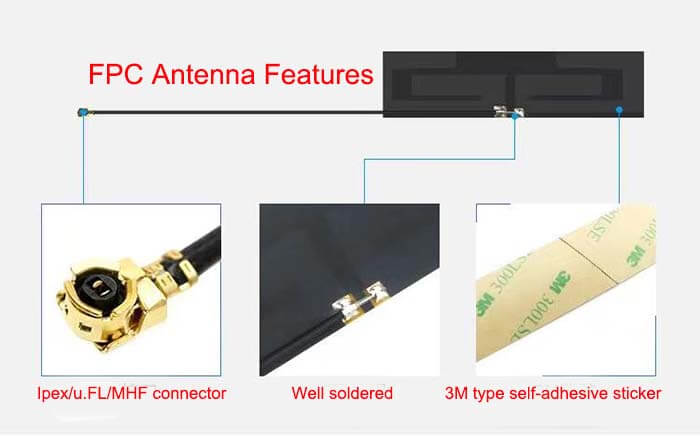

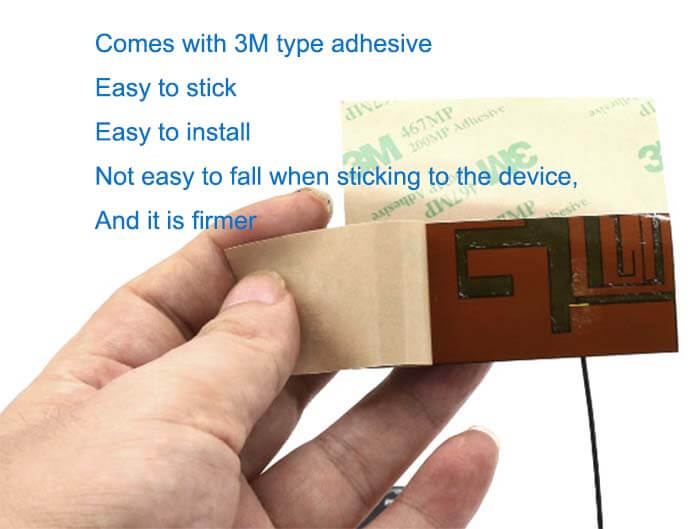
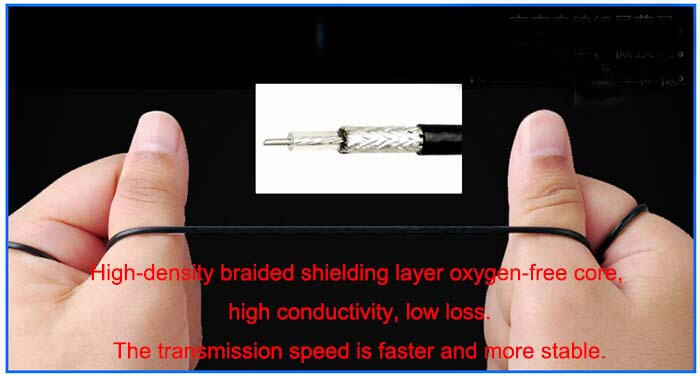

WLAN Antenna 2.4GHz Antenna Applications
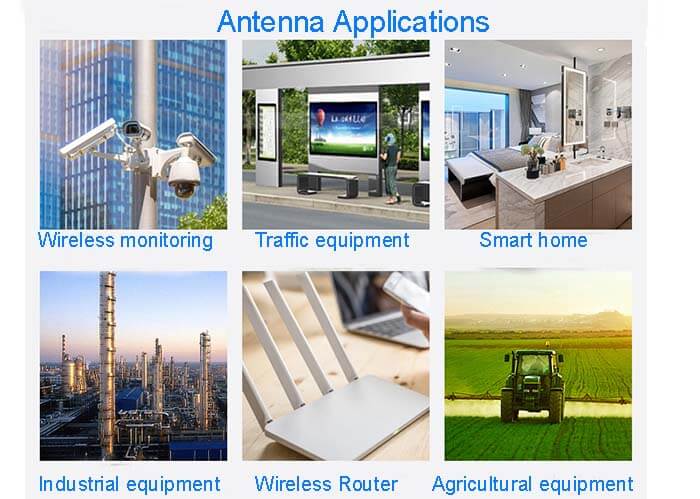
How to make an LDS antenna design?
The LDS antenna is an evolved version of the FPC antenna. The space utilization rate is extremely high.
The steel sheet antenna is stamped out, and it must be flat and not stamped out of complex shapes.
The FPC antenna is a whole plane, although it can be bent, it can’t be made too complicated.
In the era of 4G mobile phones, there are many antenna frequency bands, and the internal space of the product is very compact. It is difficult to find a large flat surface for the antenna.
So the LDS antenna was born: the pattern of the antenna was carved out by laser.
Advantages: It can make full use of various irregular surfaces in the three-dimensional space and reduce the size of the antenna.
Disadvantages: expensive. It is an order of magnitude more expensive than FPC antennas. And there are many special requirements for the outer surface of the product.
Cost: PCB antenna, steel sheet antenna, FPC antenna, external antenna, ceramic antenna, LDS antenna
Performance: external antenna built-in antenna (all types of built-in antennas have similar performance)
Space: the smallest LDS, the largest external antenna
The appropriate antenna should be selected according to the frequency band requirements, appearance requirements, and cost requirements of the Internet of Things and smart hardware products.
When design and usage notes:
1. The antenna features high compatibility and precision, and stable performance for a simple and environment-friendly manufacturing process.
2. Trace can be routed on a device case or bracket, thus saving space within the device.
3. As the antenna is attached to a plastic bracket, the deformation of the bracket will cause a fracture of the antenna.

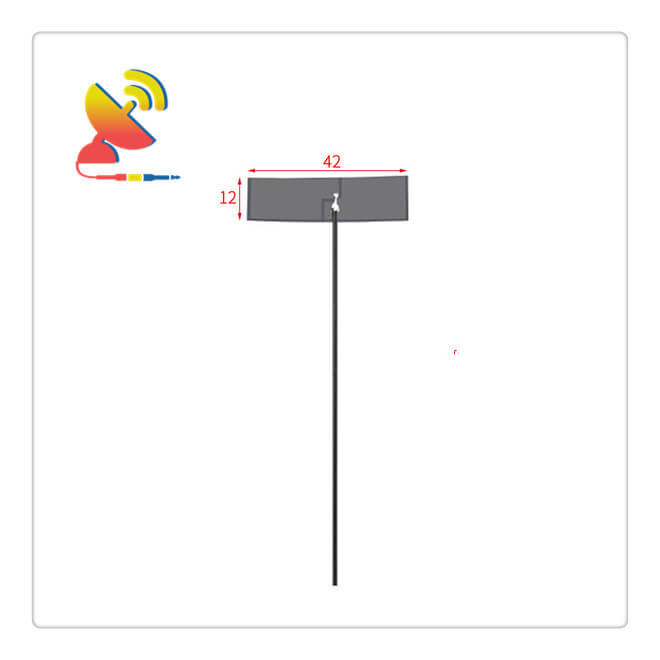
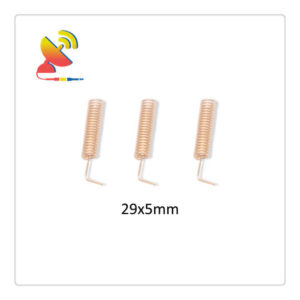
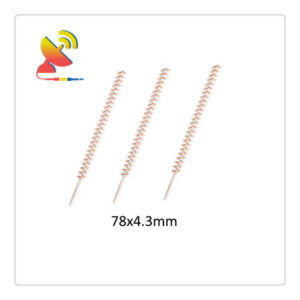
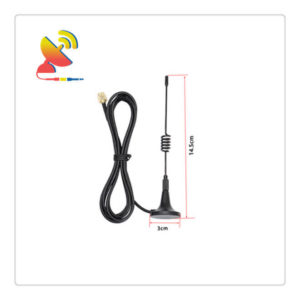
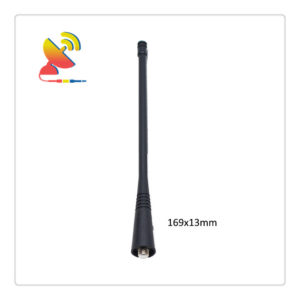
Reviews
There are no reviews yet.